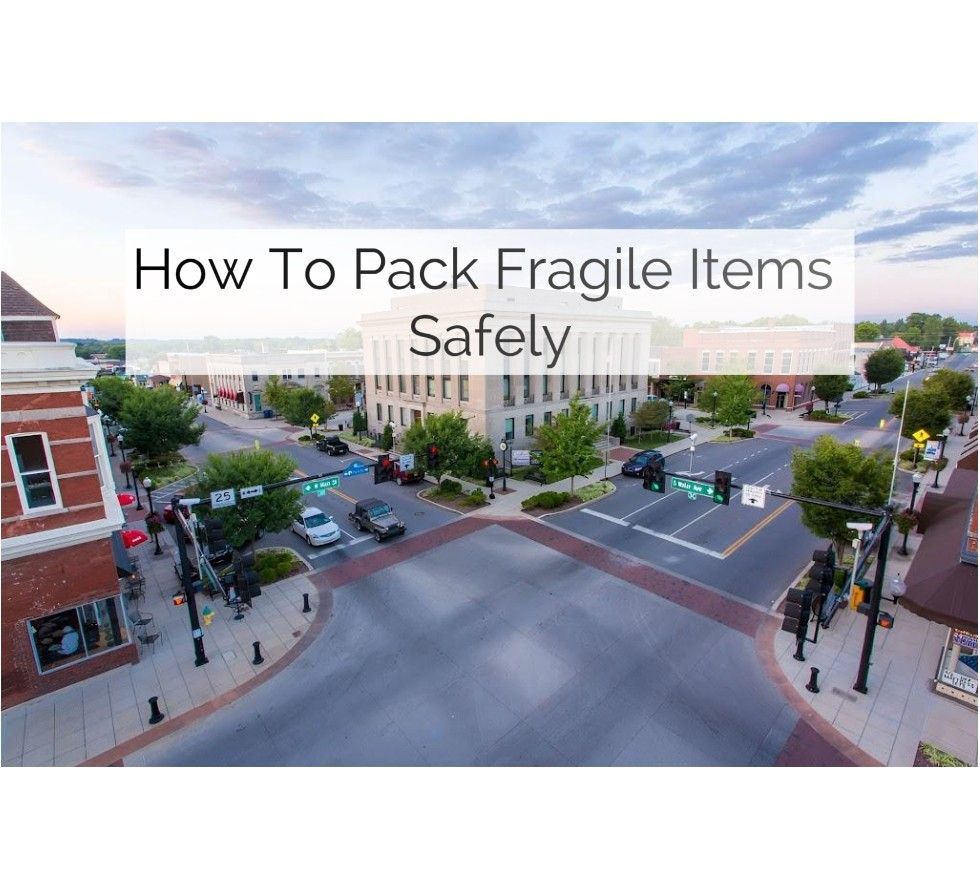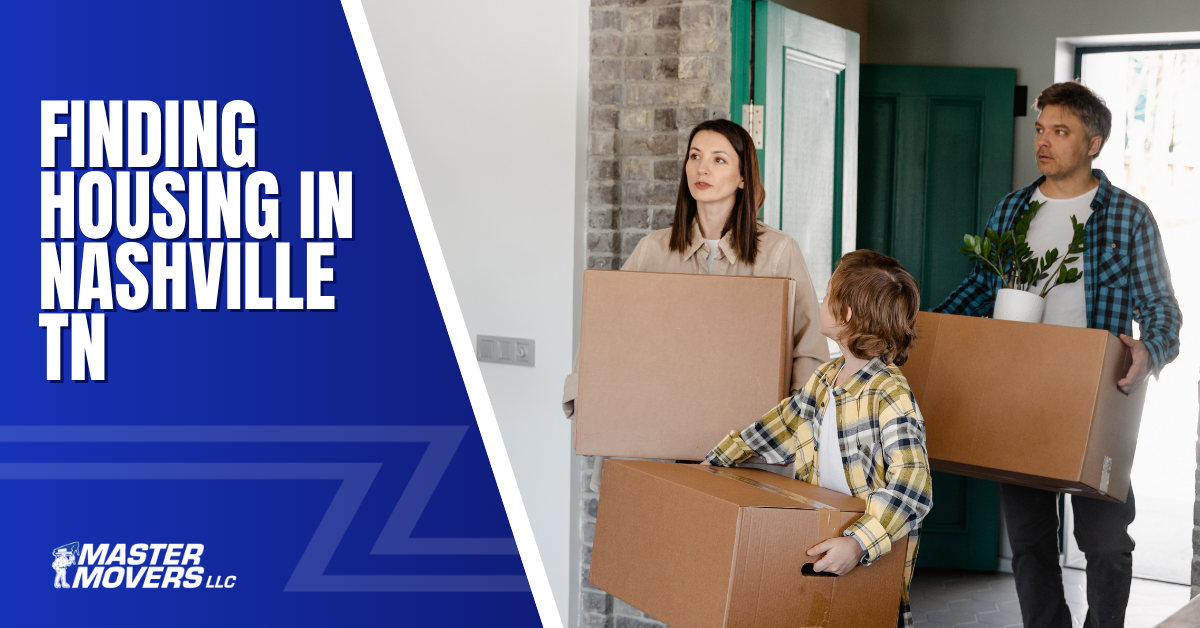Fragile Packing Secrets for a Smooth Move

Let's Start Your
FREE MOVING
QUOTE NOW!
Moving can be an exciting new chapter, but the thought of packing delicate and cherished possessions often brings a wave of anxiety. From antique vases to irreplaceable heirlooms and everyday dinnerware, ensuring these items arrive at your new home intact is a top priority. A single broken item can turn excitement into frustration, highlighting the critical importance of proper packing.
Knowing to pack fragile items safely is an art form that, when mastered, can save you time, stress, and potential financial loss. It's not just about throwing some bubble wrap around an object; it's about understanding the unique needs of each item, selecting the right materials, and employing proven techniques. This will walk you through everything you need to know to protect your most vulnerable belongings.
At Nashville Master Movers LLC, a fully licensed and insured residential moving company, our experienced crews and proven safety record ensure your next move is smooth, secure, and stress-free. We understand the value you place on your possessions. Our goal is to provide you with the expert knowledge and resources necessary for a worry-free relocation, whether you're handling the packing yourself or opting for professional assistance.
What are considered fragile items when moving?
Fragile items are anything easily broken, chipped, or damaged during transit due to their delicate nature. This includes a wide range of household goods.
Common examples of fragile items include glassware (drinking glasses, wine glasses, vases), ceramics (plates, bowls, decorative figures), electronics (televisions, computers, monitors), mirrors, framed artwork, lamps, collectibles, and any items made of porcelain, crystal, or thin glass. Even seemingly sturdy items with delicate components, like chandeliers or certain musical instruments, fall into this category.
What packing materials do I need for fragile items?
To effectively pack fragile items safely, you will need a specific set of high-quality packing materials designed to provide maximum protection. Using the right materials is paramount.
- Sturdy Moving Boxes: Always opt for new, double-walled corrugated boxes for fragile items. Used boxes may have compromised structural integrity. Look for specialized dish pack boxes or cell kits for glassware.
- Packing Paper/Newsprint: Unprinted newsprint or packing paper is ideal for wrapping individual items and filling voids. It's clean and won't transfer ink like a newspaper.
- Bubble Wrap: Essential for cushioning. Comes in various bubble sizes; smaller bubbles are good for delicate items, larger bubbles for bulkier or more robust fragile pieces.
- Packing Tape: Strong, wide packing tape is crucial for sealing boxes securely.
- Markers: For clearly labeling "FRAGILE" on all sides of the box.
Scissors/Box Cutter: For cutting tape and packing materials. At Nashville Master Movers LLC We offer Moving Supplies, including boxes, shrink wrap, and bubble wrap, our experienced team handles everything from fragile items to heavy furniture, ensuring your belongings are safe and secure.
How do I prepare fragile items for packing?
Proper preparation of each fragile item before wrapping and boxing is crucial for preventing damage. This step ensures that the item is as stable and clean as possible.
- Cleanliness: Ensure all items, especially glassware and dishes, are clean and dry. Any residue can attract dust or even cause sticking during transit.
- Disassembly: If possible, disassemble items like lamps (remove shades, bulbs, and harps) or delicate furniture pieces. Wrap each component separately.
- Reinforce Weak Points: For items with handles (e.g., teacups) or delicate protrusions, add extra padding around these areas before the main wrapping.
- Empty and Secure: Empty liquids from bottles and secure any loose parts. For electronics, unplug all cables and secure them, perhaps even placing them in a separate, labeled bag within the same box.
What is the best technique for wrapping dishes and glassware?
The best technique for wrapping dishes and glassware involves individual wrapping and creating a cushioned environment within the box. This multi-layered approach minimizes movement and absorbs shock.
For dishes:
- Individual Wrap: Place a stack of 4-5 sheets of packing paper flat on a surface. Place one plate in the center.
- Wrap Diagonally: Pull one corner of the paper over the plate, then another, tucking and folding as you go until the plate is fully enveloped. Use extra paper for larger or more valuable plates.
- Stand on Edge: Always pack plates on their edge (vertically) in the box, rather than flat. Plates are stronger on their edge and less likely to break from pressure.
For glassware (e.g., glasses, stemware):
- Crumple Paper: Place a sheet of packing paper on a surface. Crumple a small piece of paper and gently stuff it into the glass.
- Wrap Base First: Starting at the corner of the paper, place the glass diagonally and roll it away from you, tucking the paper around the base and stem (for stemware).
- Tuck and Roll: Continue rolling, ensuring the paper is snug but not overly tight. Fold the sides in as you roll to create a secure bundle.
- Extra Cushion: For delicate stemware, consider wrapping an additional layer of bubble wrap around the individually paper-wrapped glass.
- Pack Upright: Pack glasses upright in the box, not on their sides.
How should I pack electronics and small appliances?
Packing electronics and small appliances safely requires careful handling to protect sensitive components and screens. Original packaging is always best, but if unavailable, specific methods will ensure their safety.
- Original Packaging (Ideal): If you still have the original boxes and packing materials (styrofoam inserts, custom-fit cushioning) for your electronics, use them. They are designed to fit perfectly and absorb shock.
- Cables and Accessories: Unplug all cables, label them if necessary, and place them in a resealable bag along with any remote controls or small accessories.
- Screen Protection: For TVs, monitors, or tablets, use specialized screen covers or wrap them in soft moving blankets or several layers of bubble wrap. Secure with tape.
- Layering and Cushioning: Wrap the entire electronic item in bubble wrap, securing it with tape. Place a layer of crumpled packing paper or foam peanuts at the bottom of a sturdy box. Position the wrapped item in the center, and fill all voids with more packing material to prevent shifting.
- Labeling: Clearly label the box "FRAGILE," "THIS SIDE UP," and the room it belongs in.
What are the best practices for packing mirrors and framed artwork?
Mirrors and framed artwork are particularly vulnerable to breakage and require specialized packing techniques to prevent cracks, shatters, and frame damage. Their flat, often large surface area makes them susceptible to impact.
- X-Tape Method: Before wrapping, apply painter's tape in a large "X" pattern across the glass surface of mirrors or framed art. If the glass breaks, this helps keep the pieces together and prevents shattering.
- Corner Protectors: Use cardboard corner protectors or create your own from folded cardboard to guard the vulnerable corners of frames.
- Layered Wrapping:
- Wrap the item in a soft moving blanket or several layers of packing paper.
- Add a layer of bubble wrap, ensuring all surfaces are covered.
- For larger items, use specialized mirror boxes or art boxes. These are designed to hold flat items securely. At Master Movers LLC, we’ve built our reputation as Nashville’s trusted art and antique moving company by serving collectors, galleries, designers, and discerning homeowners who value expertise, discretion, and meticulous care.
- Secure in Box: Pack snugly in a box with plenty of cushioning material around all sides to prevent shifting.
How do I pack lamps and lamp shades safely?
Lamps, with their multiple delicate components, and lamp shades, known for their easily dented or torn fabric, require individual attention to ensure they arrive intact. Proper disassembly is key here.
- Disassemble Lamps: Carefully remove the harp, finial, and light bulb from the lamp base. Wrap each component separately in packing paper or bubble wrap. Place smaller parts in a labeled bag and tape it to the lamp base or put it in the same box.
- Lamp Base: Wrap the lamp base thoroughly in several layers of bubble wrap, paying extra attention to any decorative or delicate parts. Place it upright in a sturdy box, filling all empty spaces with crumpled packing paper or peanuts to prevent movement.
- Lamp Shades: Lamp shades are extremely delicate and should never be nested or stacked unless specifically designed for it. Wrap each lamp shade individually in several layers of clean packing paper or a light moving blanket.
- Dedicated Box: Pack lamp shades in a separate, appropriately sized box. Do not put anything else in the lamp shade box that could crush or dent them. Fill any remaining void with very lightly crumpled paper.
What are common mistakes to avoid when packing fragile items?
Even with the best intentions, certain mistakes can lead to damaged fragile items. Avoiding these common pitfalls is just as important as implementing proper packing techniques.
- Using Used or Weak Boxes: Boxes lose structural integrity over time. A flimsy box offers inadequate protection against crushing or impacts. Always use new, sturdy boxes, especially for fragile items.
- Insufficient Cushioning: Not using enough packing paper, bubble wrap, or void fill is a primary cause of damage. Items must be snug and immobile within the box.
Over-packing or Under-packing Boxes: An over-packed box is susceptible to bursting, while an under-packed box allows items to shift excessively, leading to breakage. Professional movers like Nashville Master Movers LLC provide professional packing services and are trained in solutions to prevent this.
Key Takeaways
To ensure your delicate possessions arrive safely at your new destination, remember these key points:
- Identify All Fragile Items: Categorize everything that's easily breakable.
- Gather Proper Materials: Invest in sturdy boxes, ample packing paper, and bubble wrap.
- Individual Wrapping is Key: Wrap each fragile item separately and thoroughly.
- Cushion, Cushion, Cushion: Fill all voids in boxes to prevent movement.
- Pack Strategically: Place heavier items at the bottom and lighter, more fragile items on top.
- Label Clearly and Extensively: Mark "FRAGILE" and "THIS SIDE UP" on all sides of the box.
Why trust Nashville Master Movers LLC with your delicate move?
While this empowers you with the knowledge of how to pack fragile items safely, sometimes the sheer volume or value of your possessions calls for professional expertise. At Nashville Master Movers LLC, Your Gallatin, TN, Movers we pride ourselves on our meticulous approach to every move, especially when it comes to your most cherished belongings. Our trained and experienced movers understand the nuances of handling delicate items, from the moment they are loaded onto our trucks to their safe arrival at your new residence. We use specialized equipment and techniques to ensure maximum protection.



